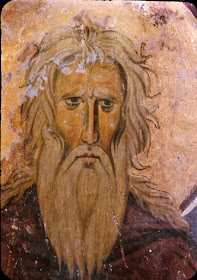Verses
O ye light-bearing stars of the spiritual firmament,
Enlighten my mind with your rays.
Verses Against Arius
Calling the Son a stranger to the Father’s essence,
Arius proved to be a stranger to God’s glory.
On the seventh Sunday of Pascha, we commemorate the holy God-bearing Fathers of the First Ecumenical Synod.
The Commemoration of the First Ecumenical Synod has been celebrated by the Church of Christ from ancient times. The Lord Jesus Christ left the Church a great promise, “I will build My Church, and the gates of hades shall not prevail against it” (Mt. 16:18). Although the Church of Christ on earth will pass through difficult struggles by the enemy of salvation, it will emerge victorious. The holy martyrs bore witness to the truth of the Savior’s words, enduring suffering and death for confessing Christ, buecause the persecutor’s sword is shattered by the Cross of Christ.
Though the Church has always been persecuted by outside forces, heresies have also risen from within the Church itself to destroy it through poisonous doctrines. One of the most pernicious of these heresies was Arianism. Arius, a priest of Alexandria, was a man of immense pride and ambition. In denying the divine nature of Jesus Christ and His equality with God the Father, Arius falsely taught that the Savior is not consubstantial (of one essence) with the Father, but is only a created being.
A local Synod, convened with Patriarch Alexander of Alexandria presiding, condemned the false teachings of Arius. However, Arius would not submit to the authority of the Church. He wrote to many bishops, denouncing the decrees of the local Synod. He spread his false teaching throughout the East, receiving support from certain Eastern bishops.
Investigating these dissensions, the holy emperor Constantine (May 21) consulted Bishop Hosios of Cordova (Aug. 27), who assured him that the heresy of Arius was directed against the most fundamental dogma of Christ’s Church, and so he decided to convene an Ecumenical Synod. In 325, 318 bishops representing local Christian Churches from various lands gathered together at Nicaea. Among the assembled bishops were many confessors who had suffered during the persecutions, and who bore the marks of torture upon their bodies.
With Patriarch Alexander of Alexandria came his deacon, Athanasius (who later became Patriarch of Alexandria). He is called “the Great,” for he was a zealous champion for the purity of Orthodoxy. In the Sixth Ode of the Canon for today’s Feast, he is referred to as “the thirteenth Apostle.”
The emperor Constantine presided over the sessions of the Synod. In his speech, responding to the welcome by Bishop Eusebius of Caesarea, he said, “God has helped me cast down the impious might of the persecutors, but more distressful for me than any blood spilled in battle of a soldier, is the internal strife in the Church of God, for it is more ruinous.”
Arius, with seventeen bishops among his supporters, remained arrogant, but his teaching was repudiated and he was excommunicated from the Church. In his speech, the holy deacon Athanasius conclusively refuted the blasphemous opinions of Arius. The heresiarch Arius is depicted in iconography sitting on Satan’s knees, or in the mouth of the Beast of the Hell (Rev. 13).
The Fathers of the Synod declined to accept a Symbol of Faith (Creed) proposed by the Arians. Instead, they affirmed the Orthodox Symbol of Faith. Saint Constantine asked the Synod to insert into the text of the Symbol of Faith the word “consubstantial,” which he had heard in the speeches of the bishops. The Fathers of the Synod unanimously accepted this suggestion.
In the Nicene Creed, the Holy Fathers set forth and confirmed the Apostolic teachings about Christ’s divine nature. The heresy of Arius was exposed and repudiated as an error of haughty reason. After resolving this chief dogmatic question, the Synod also issued Twelve Canons on questions of ecclesiastical administration and discipline. Also decided was the date for the celebration of Holy Pascha. By decision of the Synod, Holy Pascha should be celebrated by Christians on the first Sunday after the first full moon of the vernal equinox (which occurred on March 22 in 325).
Apolytikion in the Plagal of the Fourth Tone
Most glorified art Thou, O Christ our God, Who hast established our Fathers as luminous stars upon the earth, and through them didst guide us all to the true Faith. O Most Merciful One, glory be to Thee.
Kontakion in the Plagal of the Fourth Tone
The Preaching of the Apostles and the doctrines of the Fathers confirmed the one Faith in the Church. And wearing the garment of truth woven from the theology on high, she rightly divideth and glorifieth the great mystery of piety.





























